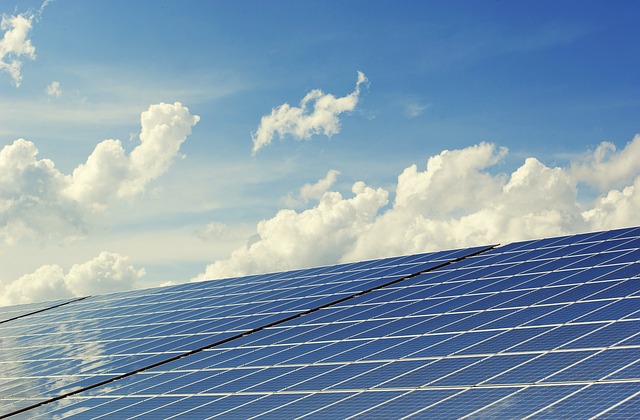by the Alabama Solar Industry Association Board of Directors
Alabama is ranked 13th in the nation as having the greatest solar potential, yet only 0.26% of its energy comes from solar, leaving the state far behind others when it comes to total installed solar capacity. According to an annual report produced by the Solar Energy Industries Association (SEIA), Alabama ranked 29th in the United States for solar production in 2018. Solar in the Southeast, a blog dedicated to highlighting the ever-growing southeastern solar market, reported Alabama as ranking dead last in the seven-state southeastern region. By failing to adopt more solar, and other clean energy technologies, Alabama is missing out on lower energy prices, increased jobs in the solar economy, cleaner air and water, and a more resilient power infrastructure that protects our communities.
The Mason-Dixon April 2019 poll of 625 registered Alabama voters, published by the Alabama Political Reporter, indicates Alabamians want a clean energy future, yet some are unsure what their elected officials and utilities are doing to make it happen. While 75% of voters support expanding the use of renewable energy, nearly a third of voters remain unsure about whether Alabama is using enough. Of that 75% majority, 60% are Republican voters. This is a bipartisan and educational issue.
Solar energy is a huge growth industry in many parts of the country, but Alabama is lagging on taking advantage of this opportunity for economic development. Nearly 250,000 people work in the U.S. solar industry. According to The Solar Foundation’s 2018 National Solar Job Census, from 2013 – 2018, U.S. solar employment grew 70%, or 11% annually, while the U.S. economy grew jobs at only 1.76%. In the Southeast, the census lists the following: South Carolina (2,983 solar jobs), Georgia (3,696), Tennessee (4,690), and North Carolina (6,719). In Alabama, that number declines to 614 jobs, drastically underperforming its potential for well-paying, clean energy jobs and growing the state’s economy. This missed opportunity represents millions of dollars in lost Alabama property, sales and employment taxes.
Alabamians are also missing out on the benefits of solar energy within their homes, due to a rise in fees and taxes to harvest their own energy. Through a “capacity reservation charge,” often referred to as the “Alabama solar tax,” Alabama Power charges an additional fee to create energy through residential solar systems. This charge destroys the economics and payback period of investing in residential solar. Tennessee Valley Authority (TVA) is also considering grid access fees for solar installation. The issue at hand is simple: Alabamians should not have to pay additional fees to harvest their own energy via solar panels, especially if the panels are mounted on their private property.
So, what can we do to bring clean jobs and clean energy to Alabama? For starters, we can implement clean energy freedom by adopting policies that are already succeeding in a few of our sister states. For example, Georgia, Mississippi, and South Carolina have net-metering rules allowing people to sell the energy they produce back to the grid at a fair price.
South Carolina recently passed an Energy Freedom Act that implements a suite of new measures, including neighborhood community solar programs and more transparency into which sources utilities use to generate energy. This transparency in resource planning is needed here in Alabama.
In early 2019, Arkansas signed a Republican-sponsored bill into law which allows for third-party financing and ownership of solar projects. The Republican-controlled House and Senate could not deny “the very compelling business case,” and Arkansas lawmakers didn’t want to pass on the opportunity for job growth and industry investment. Such laws allowing third parties to finance and own solar systems and sell clean energy directly to customers, are a great way to rapidly spur solar development in Alabama.
Clean energy freedom means cleaner water for fishing, swimming, and drinking. Alabama touts the most miles of navigable waterways in the U.S. and more freshwater biodiversity than any other state, but at the same time faces some of the nations’ biggest water quality challenges. According to the SEIA, solar power technologies use a modest amount of water (approximately 20 gallons per megawatt hour, or gal/MWh) for cleaning solar collection and reflection surfaces like mirrors, heliostats, and photovoltaic (PV) panels, compared to the approximately 60,000 gallons per megawatt-hour (MWh) of electricity produced by sources like nuclear and coal. Some would argue that panel washing requires quite a bit of water; however, Alabama receives an average of 56 inches of rain per year, so the argument would be moot.
Energy freedom also results in cleaner air for Alabamians. According to the U. S. Department of Energy through a 2016 study with the National Renewable Energy Laboratory (NREL), each megawatt hour of power produced with clean energy has significant healthcare benefits due to better air quality.
In conclusion, Alabamians deserve energy freedom and its benefits. Their elected officials can open the doors to a new energy future enabling cleaner and cheaper technologies that provide reliable power at lower rates. Alabama citizens must act now to demand a more prosperous and cleaner Alabama. Call your elected officials and talk about these issues. Demand clean solar energy, lower power prices, and a more transparent process for where our energy comes from. Alabamians should no longer answer “NOT SURE” when asked about our energy future.





